Bangladesh is a country. Part-1
Bangladesh-
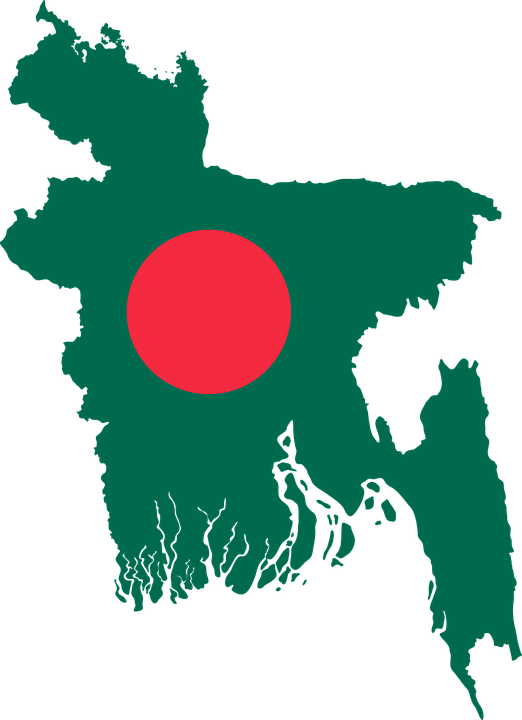
Country Profile-
Country
Formal Name:
People's Republic of Bangladesh.
Short Form:
Bangladesh.
Term for Citizens:
Bangladeshi(s).
Capital:
Dhaka.
Date of Independence:
April 17, 1971; eastern part of Pakistan
(East Pakistan), 1947—71.
Geography
Size:
Total 144,000 square kilometers, land area 133,910 square
kilometers.
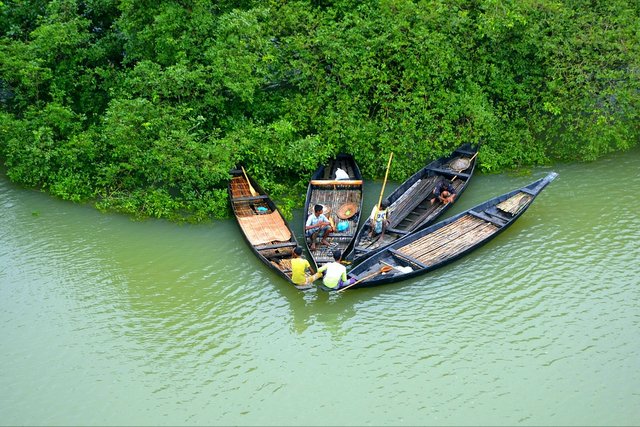
Topography:
Broad deltaic plain. Chittagong Hills in southeast, Low Hills in northeast and modest-elevation highlands in north and northwest.
Climate:
Subtropical monsoon climate, wide seasonal variations in rainfall, moderately warm temperatures, high humidity. Climate generally uniform throughout entire country. Subject to severe natural disasters, such as floods, tropical cyclones, tornadoes, and tidal bores. Society
Population:
Officially given at 109,963,551 inJuly 1988. Eighth largest population in world. Annual growth rate 2.6 percent. Projected to reach more than 140 million by year 2000. About 82 percent live in rural areas, 18 percent in urban areas. In 1988 population density 821 per square kilometer, highest in world. Population control top priority for government.
Ethnic Groups:
Over 98 percent Bengalis. Approximately 600,000 Biharis (Urdu-speaking, non-Bengali Muslims) and 900,000 members of tribal minority groups. Main tribal groups Chakmas, Marmas, Tipperas, and Mros, living primarily in Chittagong Hill Tracts (see Glossary).
Languages:
Bangla (official language); English widely used by educated elite. Arabic used in many Muslim homes. Various tribal
languages.
Religion:
In 1988 nearly 83 percent Muslim, 16 percent Hindu, less than 1 percent Buddhist, Christian, and tribal religions.
Education:
Schools based on British system: five years primary, five years lower secondary, and two years higher secondary. Higher education includes 758 general colleges, 7 universities, and 50 professional colleges. Traditional emphasis on arts and humanities; increased emphasis in late 1980s on technical subjects. Numerous religious-affiliated primary schools. In 1988 national literacy rate officially 29 percent, possibly lower; men 39 percent, women 18 percent; urban 35 percent, rural 17 percent.
Health:
Life expectancy almost equal for males and females, averaging 55.1 years in 1986. Major health hazards infectious and parasitic diseases, poor nutrition, and inadequate sanitation. High infant mortality rate at 111.9 per 1,000; young children represented 40 percent of deaths annually.
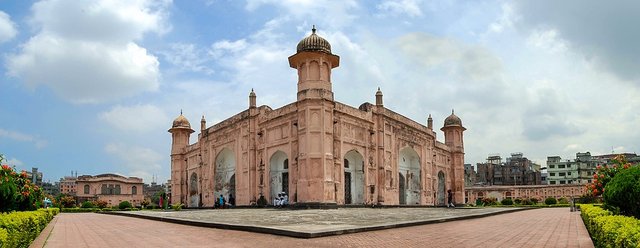
Economy-
Gross National Product (GNP):
US$15.6 billion in fiscal year (FY) 1986 at current prices; per capita GNP US$150; 4.5 percent real growth in FY 1987.
Agriculture:
Large-scale subsistence farming, labor intensive, heavily dependent on monsoon rains. Main crops rice, jute, wheat, tea, and forestry products. Fisheries of increasing importance.
Industry:
Jute manufactures, ready-made garments, cotton textiles, seafood processing, and pharmaceuticals.
Services:
Substantial exported labor, primarily to Persian Gulf nations. As many as 450,000 Bangladeshis abroad in 1987; important source of foreign currency remittances.
Resources:
Sufficient natural gas for country's nitrogenous fertilizer needs. Abundant proven coal reserves. Offshore and onshore reserves of petroleum. Hydroelectric power and thermal power sources. Biofuels widely used in rural areas.
Exports:
Approximately US$819 million in FY 1986. Raw jute and jute manufactures, frozen seafood, ready-made garments, tea, and leather goods. United States, Japan, and Britain largest buyers.
Imports:
Approximately US$2.4 billion in FY 1986. Food grains, fuels, raw cotton, fertilizer, and manufactured products. Singapore, Japan, and United States largest suppliers.
Balance of Payments:
Has had negative trade balance since independence in 1971. Exports represented 30 percent, imports 70 percent of total annual trade in FY 1986.
Exchange Rate:
34.20 takas = US$1 (September 1988).
Fiscal Year:
July 1 to June 30.
Transportation and Communications
Rivers:
Extensive and complex network of some 700 rivers. Major systems Jamuna-Brahmaputra, Padma-Ganges, Surma-Meghna, and Padma-Meghna, all of which flow south to Mouths of the Ganges and into Bay of Bengal. Fifth major system Karnaphuli in Chittagong region. Primary transportation system employing nearly 300,000 small and medium-sized sail- and human-powered country boats. About 8,430 kilometers of navigable waterways.
Roads:
About 10,890 kilometers of motorable roads in 1986. Despite severe flooding, increasingly important means of moving people and goods. Extensive network of bridges and ferries cross numerous inland waterways.
Railroads:
About 2,818 kilometers of track in 1986. Operated by Bangladesh Railways, declining numbers of rolling stock as 1980s progressed.
Ports:
Chittagong and Chalna major freight-handling ports.
Airports:
Largest near Dhaka (Zia International Airport) and at Chittagong and Sylhet. National carrier Biman Bangladesh Airlines serving twenty-four cities in twenty countries; domestic service to eighteen regional airports.
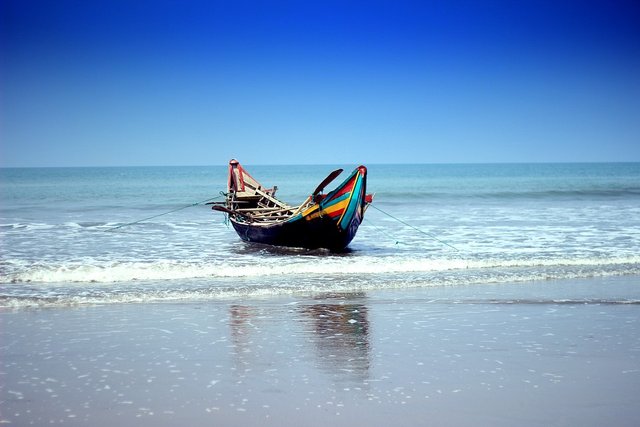
Government and Politics-
Government:
Presidential form of government with popularly elected president and appointed prime minister. 1972 Constitution amended numerous times to reflect new political realities. Unicameral Parliament (known as Jatiyo Sangsad, or House of the People) with 300 members. Elections held in March 1988.
Politics:
Authoritarian or military regimes have run Bangladesh almost since its inception. Regime in power traditionally controls government and Parliament through single national political party: under Sheikh Mujibur Rahman (1972 75), the Awami League (People's League); under Ziaur Rahman (1977-81), the Bangladesh Nationalist Party; and under Hussain Muhammad Ershad (since 1982), the Jatiyo Party (National Party). Numerous opposition parties joined periodically in fractious alliances against party in power. In 1988 most important were Awarni League, centrist Bangladesh Nationalist Party, leftist Jatiyo Samajtantrik Dal (National Socialist Party), and conservative, pro-Islamic Jamaat e Islami (Congregation of Islam). Student and workers' wings of these and other parties important players in national politics.
Justice:
Supreme Court headed by chief justice. Two Supreme Court divisions: High Court Division with seven regional benches, and Appellate Division in Dhaka. Grass-roots judicial system at village level. British-style criminal codes, amended in Pakistan and Bangladesh eras.
Administrative Divisions:
Divided into four administration divisions headed by commissioners. Divisions divided into twenty-one regions, further subdivided into sixty-four districts (zilas). Urban subdivisions in 1988 included four municipal corporations (Dhaka, Chittagong, Rajshahi, and Khulna—which corresponded to the four divisions in name), eighty-seven municipalities (pourashavas), and thirty townships (thanas). Rural subdivisions included 460 subdistricts (upazilas) and 4,401 unions. Popularly elected representative councils (parishads) at various administrative levels except divisions and regions.
Foreign Affairs:
Heavily dependent on massive infusions of foreign development aid, Bangladesh maintains neutral policy. Maintains friendly relations with United States, Soviet Union, and China; close relations with Muslim nations; and proper but watchful relations with neighboring India. Member of Afro-Asian People's Solidarity Organization, Asian Development Bank, Colombo Plan, Commonwealth of Nations, Customs Cooperation Council, Group of 77, International Bank for Reconstruction and Development, International Olympic Committee, International Rice Council, International Telecommunications Satellite Organization, INTERPOL, Islamic Development Bank, Nonaligned Movement, Organization of the Islamic Conference, South Asian Association for Regional Cooperation, United Nations and all its affiliated agencies, World Federation of Trade Unions, and World Tourism
Organization.
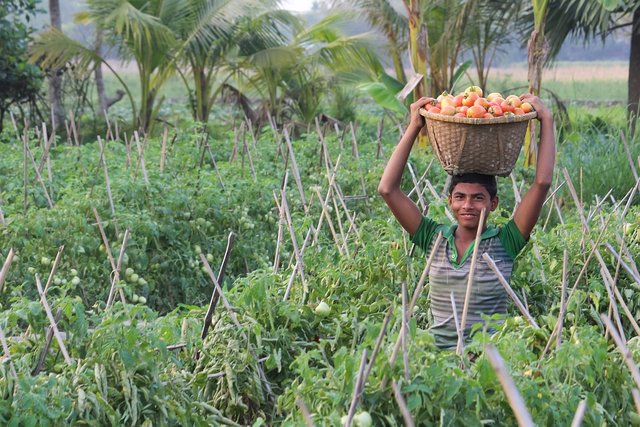
National Security-
Armed Forces:
About 102,500 in 1988: army 90,000; navy 7,500; and air force 5,000.
Military Units:
Most powerful and prestigious Ninth Infantry Division near Dhaka and Twenty-fourth Infantry Division at Chittagong. Other important infantry divisions at Rangpur, Jessore, Bogra, and Comilla—the latter two containing country's armor regiments.
Equipment: Army:
Type 54/55 tanks, Chinese-made Type 59 main battle tanks, and Type 62 light tanks; 105mm and 122mm howitzers; 60mm and 120mm mortars; and 57mm, 76mm, and 106mm antitank weapons. Navy: Leopard-class Type 41 and Salisbury-class Type 61 frigates and more modern Chinese-made Hegu-class, P4-class, Hainan-class, and Shanghai Il-class fast attack craft primarily for use in territorial waters. Air Force: three squadrons, comprising MiG-21s, Chinese-made F—6s and A-5s, Soviet An-26 transports, and American-made Bell 212 and Soviet Mi-8 helicopters.
Auxiliary Forces:
Important supplement to armed forces. In 1988 consisted of 30,000-member Bangladesh Rifles, 20,000-member Ansars (security guards), and 5,000-member Armed Police, all subordinate to Ministry of Home Affairs. Used to extend governmental authority and ensure law and order in border and internal areas and backup to army in wartme, Village Defence Party of 10 million (males and females) largely involved in village security.
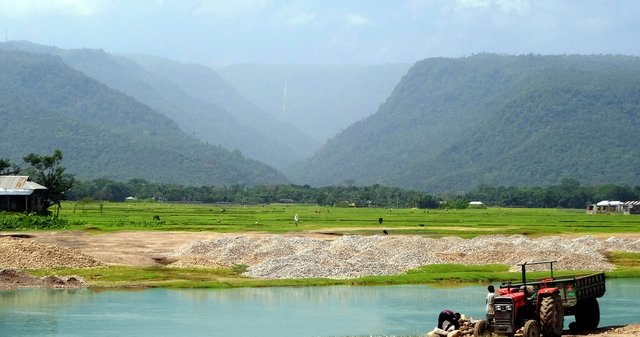
Bangladesh is very awesome greeny country i love it
ME Also
Congratulations @mamunjm! You have completed some achievement on Steemit and have been rewarded with new badge(s) :
Click on the badge to view your Board of Honor.
If you no longer want to receive notifications, reply to this comment with the word
STOPTo support your work, I also upvoted your post!
Do not miss the last post from @steemitboard!
Participate in the SteemitBoard World Cup Contest!
Collect World Cup badges and win free SBD
Support the Gold Sponsors of the contest: @good-karma and @lukestokes
I love Bangladesh cricket team.
Me Also
Good info about Bangladesh
Yup Tnq
Congratulations man. Such a informative post of a whole country. I don't think after reading it not a single person can say I don't know about Bangladesh. very detailed post..
THanks
Nice post, little bit lendy but ver helpfull
tnq
I love Bangladesh because I am a Bengali but why you Bangladeshi hate India ?
don't know bro I'm also Bangladeshi.
Bangladesh...
Such a informative article about bangladesh!!
yup